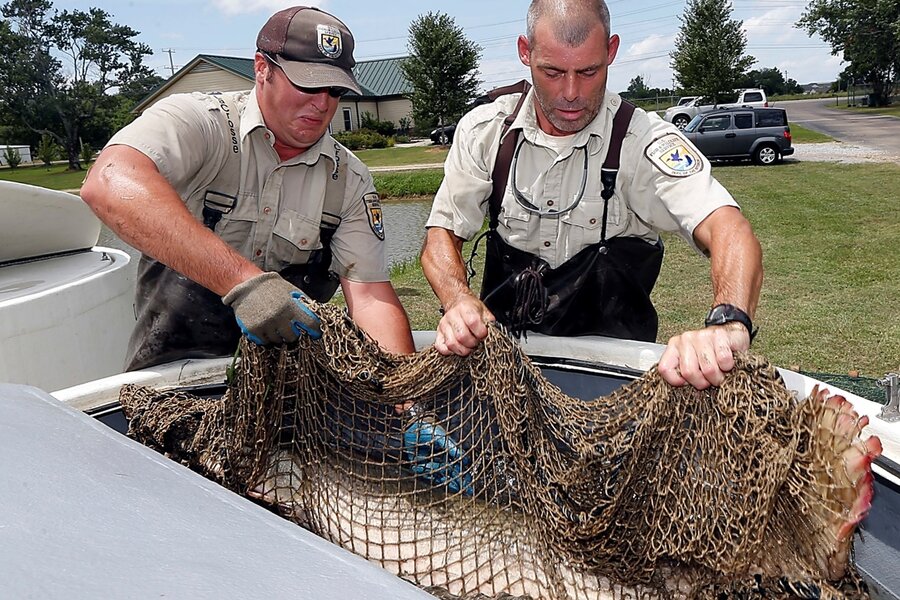The newest weapon in the Asian carp battle: Alligator fish
The alligator gar is a tough fish to love. The long snout, two rows of teeth, and scales so sharp Native Americans used them as arrowheads, all make the decision by several Midwestern states to reintroduce the "river monster" difficult to understand.
Yet reintroduction of the ugly alligator fish to the upper Midwest represents not only the return of a native species once declared extinct in several states, but also a path forward in the ever-more creative fight against a more feared enemy: the Asian carp.
“What else is going to be able to eat those monster carp?” Allyse Ferrara, who studies alligator gar at Nicholls State University in Louisiana, told the Associated Press. “We haven’t found any other way to control them.”
The Asian carp is a hefty bottom-dweller known for smacking fisherman with a slippery tail when it leaps suddenly out of the water. Originally introduced in the 1970s to help with catfish farms in Arkansas, the large fish swam north and now infests the waters of the Mississippi River. Their expansion alarms both biologists and commercial fisherman, who fear the rapidly reproducing "garbage fish" will enter the Great Lakes and destroy a unique ecosystem – and a $7 billion fishing industry.
Efforts to stop this have been numerous and varied. Over President Obama's objections, Congress allotted $300 million to a Great Lakes Restoration Initiative, a fund started in 2010 over concerns about the Asian carp. This money contributes to catching and netting efforts, an electric fence in the Illinois River near Chicago, and the ongoing building of a "lock and dam" system by the US Army Corps.
In May, a coalition of federal, state, and local officials, companies, and nonprofits completed the first-ever fish wall in Indiana. The 7.5-foot earthen wall separates rivers that Asian carp may traverse from a watershed that biologists called "a back door to Lake Erie," The Christian Science Monitor reported.
But officials would ultimately like to stop the Asian carp, not just contain it. The alligator gar can grow as long as an African elephant is tall, making it a potential match for the carp. They have demonstrated a taste for young carp in particular, and unlike Asian carp, they pose no threat to humans, National Geographic reported, although their eyes and eggs are poisonous.
Several Midwestern states have launched reintroduction programs for the alligator gar, and Illinois lawmakers passed a resolution earlier in July promising to protect the gar species already present in the state, the AP reported.
Some biologists urge caution in seeing the alligator gar as the "silver bullet" against the Asian carp. But it could offer biologists one more tool to use in containing the invasive fish, while reintroducing a native species that will excite trophy fishermen.
It would not be the first time biologists have used the promise of a predator's diet to drum up support for an endangered, but unwanted, animal. The Lake Erie Water Snake, another species native to the Midwest, recovered and left the Endangered Species list after it began eating the invasive round goby fish, says Richard King, a conservation biologist at Northern Illinois University.
"That's what I tell people who don't like snakes," Dr. King tells the Monitor, speaking of conservation work with the water snake. "I say, 'It eats the invasive round goby.' "
If the alligator gar can prove themselves equally useful, they, too, could lose their colloquial designation of "river monster."








